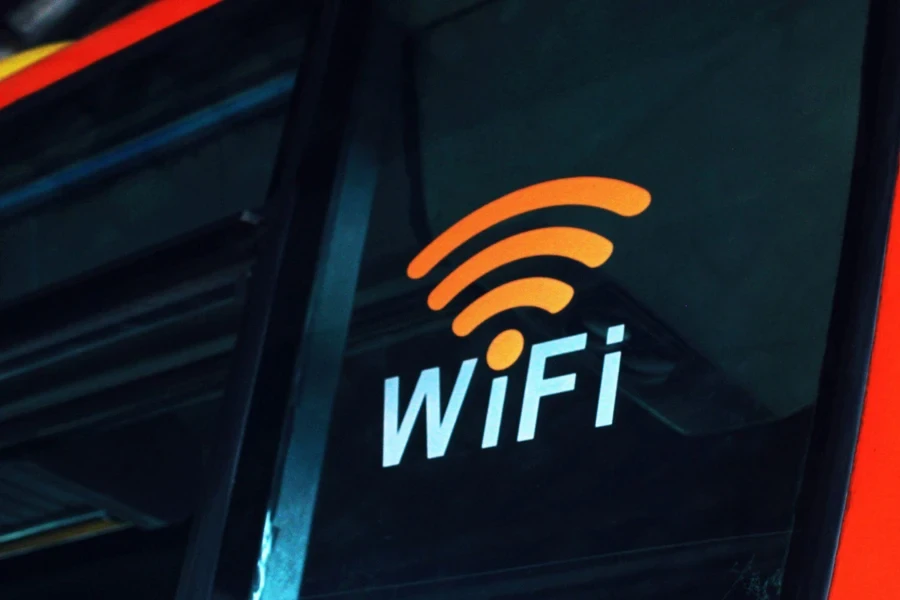Table of Contents
● Introduction
● Market overview
● Things to consider when selecting products
● Types of smart home improvement products and their features
● Conclusion
Introduction
Smart home technology harnesses the power of internet connectivity to enhance the functionality of everyday home appliances and systems, from lighting and heating to security and entertainment. These intelligent systems not only offer unprecedented convenience and control but also significantly increase energy efficiency and security. By integrating smart devices, homeowners can automate routine tasks, respond dynamically to environmental conditions, and even monitor their properties remotely. As the adoption of such technologies accelerates, integrating smart home solutions becomes essential for modern living, offering a seamless blend of comfort, efficiency, and peace of mind. For business professionals and online retailers, understanding and leveraging these smart technologies can provide competitive advantages in both product offerings and operational enhancements.

Market overview
The smart home market is witnessing substantial growth, reflecting its expanding role in modern living. As per Statista, the market is projected to achieve a revenue of US$154.4 billion in 2024, with an anticipated compound annual growth rate (CAGR) of 10.67% leading up to 2028, resulting in a market volume of US$231.6 billion. This growth is propelled by an increasing adoption rate, expected to reach 33.2% household penetration by 2028. The surge is driven by the escalating demand for home automation that provides enhanced convenience, energy efficiency, and security.
Recent trends indicate a dynamic shift in consumer preferences and technological advancements. The demand for interconnected, remotely controllable devices that streamline home management and enhance security features is climbing, particularly in regions like North America and Europe, where energy efficiency and sustainability are additional significant market drivers. These markets are continuously evolving with innovations that cater to a variety of consumer needs, ranging from basic automation to advanced home monitoring systems, underlining the importance of understanding regional market specifics and technological trends to stay competitive.

Things to consider when selecting products
Product Compatibility
Selecting the right smart home products requires careful consideration of compatibility with existing home infrastructure. It is essential that any new devices communicate seamlessly with current setups, including other smart devices, smartphones, and home networks. Products should support widely-used communication protocols such as Wi-Fi, Zigbee, or Z-Wave, which facilitate better integration and interoperability. This compatibility extends the functionality of smart home systems and allows for a smoother, more cohesive user experience.
Security Features
Security and privacy are paramount when integrating smart home technologies. Devices incorporating advanced security measures such as end-to-end encryption and two-factor authentication help protect against unauthorized access. It is also important to understand the privacy policies of devices’ manufacturers—how data is collected, stored, and used. Ensuring that these policies are robust and transparent can help safeguard personal information and enhance the overall security of the smart home ecosystem.
Installation Ease
The ease of installation and the user-friendliness of smart home products are critical factors in their adoption. Devices that are straightforward to set up and require minimal technical skills are preferable. Products should come with comprehensive, easy-to-follow installation guides. Interfaces ought to be intuitive, allowing configuration and customization of settings without extensive technical knowledge. This accessibility ensures that all features of the device can be fully utilized without ongoing frustrations or the need for professional installation services.
Cost Efficiency
When selecting smart home devices, it is important to consider not only the initial purchase price but also the long-term savings they may offer. Energy-efficient devices, particularly smart thermostats and lighting systems, can significantly reduce household energy consumption and lower utility bills. These devices often pay for themselves over time through these savings. Additionally, evaluating the overall value of the devices in terms of their operational costs, maintenance, and potential to increase home value can provide a comprehensive view of their cost-effectiveness.

Types of smart home improvement products and their features
Different types of smart home devices
The smart home device market encompasses a diverse array of products engineered to enhance residential life by automating tasks, improving energy efficiency, and increasing security. From thermostats that adapt to daily schedules to lighting systems controlled by voice commands, these devices integrate various aspects of home management into cohesive, user-friendly systems. Their broad adoption is driven by the promise of a more connected and intuitive home environment, where routine adjustments are handled automatically and remotely.
Smart thermostats
Smart thermostats are particularly notable for their energy efficiency and the convenience they offer. These devices learn from residents’ behaviors to optimize heating and cooling schedules, adapting temperatures according to when the home is occupied or likely to be empty. Advanced models offer features like geofencing, which adjusts settings based on the location of residents’ smartphones, ensuring energy is not wasted heating or cooling an empty home. Furthermore, many smart thermostats provide detailed energy consumption reports, allowing homeowners to see potential areas for additional savings.
Smart security systems
Modern smart security systems integrate a variety of components to ensure comprehensive protection. These systems typically include high-definition smart cameras, door and window sensors, motion detectors, and automated alerts that can be managed and monitored from anywhere via a smartphone app. Enhanced features may include facial recognition technology, integration with smart locks and lights for triggered responses, and continuous recording capabilities. The ability to customize alerts and monitor the home in real time offers homeowners peace of mind, whether they are at home or away.
Smart lighting solutions
Smart lighting solutions extend far beyond simple remote on/off capabilities. Today’s smart lights can adjust their brightness and color based on the time of day or the activities taking place in the home. For example, lights can gradually brighten in the morning to simulate sunrise, or dim to a warm glow to encourage relaxation in the evening. Energy efficiency is also a key feature, with LED bulbs consuming significantly less power than traditional bulbs. Programmable scenes and routines can be set up via smartphone apps or controlled through voice commands, providing both functional and ambient lighting options.
Smart appliances
The realm of smart appliances has seen significant innovation, particularly in the kitchen and cleaning categories. Smart refrigerators can track groceries, suggest recipes based on contents, and even alert homeowners when products are nearing expiration. Robotic vacuum cleaners can be scheduled to clean at certain times and are capable of navigating around furniture and over different types of flooring. Many smart appliances are also capable of self-diagnosis and can send maintenance alerts or automatically schedule service appointments, simplifying home management tasks and improving appliance longevity.
Conclusion
Investing in smart home technology offers a multitude of benefits that significantly enhance daily life through improved automation, increased energy efficiency, and advanced security measures. These intelligent systems simplify routine household tasks such as adjusting thermostats, turning lights on or off, and managing security settings, automatically adapting to individual habits and preferences to create a responsive living environment. For instance, smart thermostats can learn temperature preferences and adjust automatically, while smart lighting can change intensity based on natural light levels. The ability to control these devices remotely offers unmatched convenience, flexibility, and significant energy savings, leading to lower utility bills and a reduced carbon footprint. Additionally, smart home technologies enhance security with sophisticated systems that provide real-time alerts and monitoring capabilities, such as motion detectors and surveillance cameras, ensuring peace of mind for homeowners even when away. Choosing the right smart home products requires careful consideration of individual needs and specific functionalities, including compatibility with existing devices, ease of use, and potential for future upgrades. Making informed decisions about which features that fit one’s lifestyle ensures that the investment not only enhances property value but also improves the quality of daily living, providing a more secure, comfortable, and efficient home environment tailored to the unique needs of each household.




